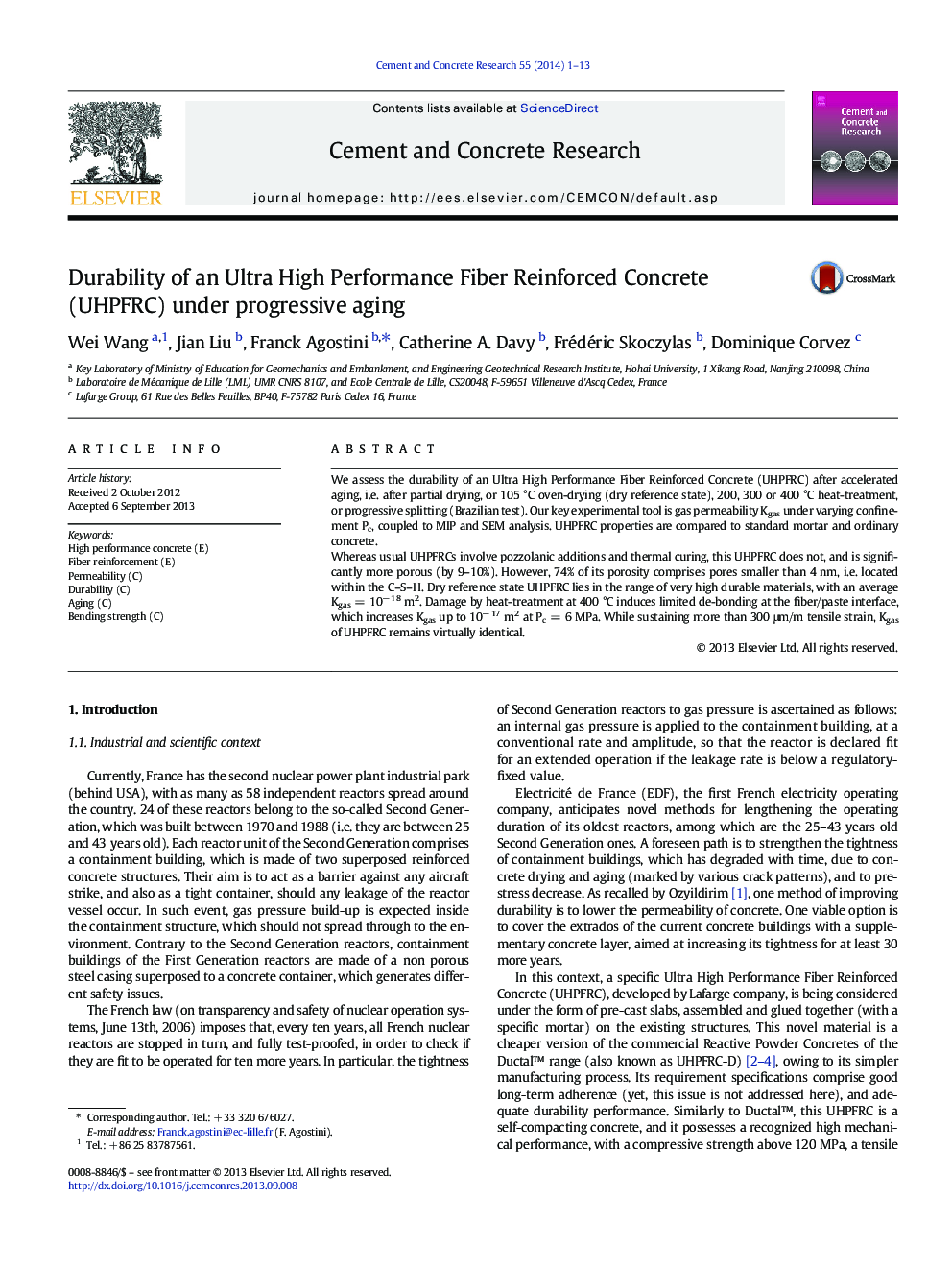| کد مقاله | کد نشریه | سال انتشار | مقاله انگلیسی | نسخه تمام متن |
|---|---|---|---|---|
| 1456335 | 1509766 | 2014 | 13 صفحه PDF | دانلود رایگان |

• Gas permeability is used to assess durability of a UHPFRC after accelerated aging.
• Dry gas permeability of UHPFRC (10–18 m2) places it in the very high durability range.
• 400 °C heat-treated UHPFRC displays limited de-bonding at the fiber/paste interface.
• 400 °C heat-treated UHPFRC is still placed within very high durability range, Kgas= 10–17 m2.
• Brazilian splitting leads to 360 μm/m diametral strain, but low Kgas is preserved.
We assess the durability of an Ultra High Performance Fiber Reinforced Concrete (UHPFRC) after accelerated aging, i.e. after partial drying, or 105 °C oven-drying (dry reference state), 200, 300 or 400 °C heat-treatment, or progressive splitting (Brazilian test). Our key experimental tool is gas permeability Kgas under varying confinement Pc, coupled to MIP and SEM analysis. UHPFRC properties are compared to standard mortar and ordinary concrete.Whereas usual UHPFRCs involve pozzolanic additions and thermal curing, this UHPFRC does not, and is significantly more porous (by 9–10%). However, 74% of its porosity comprises pores smaller than 4 nm, i.e. located within the C–S–H. Dry reference state UHPFRC lies in the range of very high durable materials, with an average Kgas = 10− 18 m2. Damage by heat-treatment at 400 °C induces limited de-bonding at the fiber/paste interface, which increases Kgas up to 10− 17 m2 at Pc = 6 MPa. While sustaining more than 300 μm/m tensile strain, Kgas of UHPFRC remains virtually identical.
Journal: Cement and Concrete Research - Volume 55, January 2014, Pages 1–13